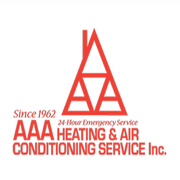3 Ways Your HVAC System Can Help Curb Allergy Attacks

Allergy symptoms could be brought on by poor indoor air quality. Dust mites, pollen, pet dander, and other allergens can become airborne, causing sinus headaches, wheezing, and additional allergy symptoms. Luckily, your HVAC system can be used in the following ways to improve indoor air quality and keep allergy-triggering pollutants at bay.
How to Use Your HVAC System to Fight Allergies
1. Change the Filter Monthly
Although you should change the HVAC filter at least once every three months, consider increasing the frequency to once a month if you have allergies. Look for a filter with a minimum efficiency reporting value (MERV) of seven to 12. This means the screen pores are small enough to not let tobacco smoke, dust mites, dander, and other common airborne contaminants pass through.
2. Dust Vents & Registers
 Add vents and registers to the list of fixtures that need regular dusting. You can use a microfiber cloth to clean the grilles and a vacuum with a nozzle attachment to extract residue from inside vents. Removing the layers of dust will prevent particles from circulating with the conditioned air pumped out of the system.
Add vents and registers to the list of fixtures that need regular dusting. You can use a microfiber cloth to clean the grilles and a vacuum with a nozzle attachment to extract residue from inside vents. Removing the layers of dust will prevent particles from circulating with the conditioned air pumped out of the system.
3. Have Gaps in Ductwork Sealed
Holes and open seams in ducts can reduce indoor air quality. Allergens clinging to surfaces can get sucked into the gaps, recirculating with the conditioned air. When an HVAC contractor seals the open sections, they can also perform duct cleaning to remove mold spores, bacteria, mildew, oil residue, and additional grime from the fixtures before it makes your family sick.
For allergy relief, contact the licensed professionals at AAA Heating & Air Conditioning Service Inc. in Lexington, KY. In business since 1962, this family-owned company provides duct cleaning as well as heating and air conditioning repair so clients throughout Fayette County can breathe comfortably in their homes. To see how the technicians will improve your indoor air quality, call (859) 254-8838 to arrange an appointment. Learn about the benefits of signing up for ongoing HVAC maintenance online. Like them on Facebook for more tips and updates.
About the Business
(21 reviews)
Have a question? Ask the experts!
Send your question

